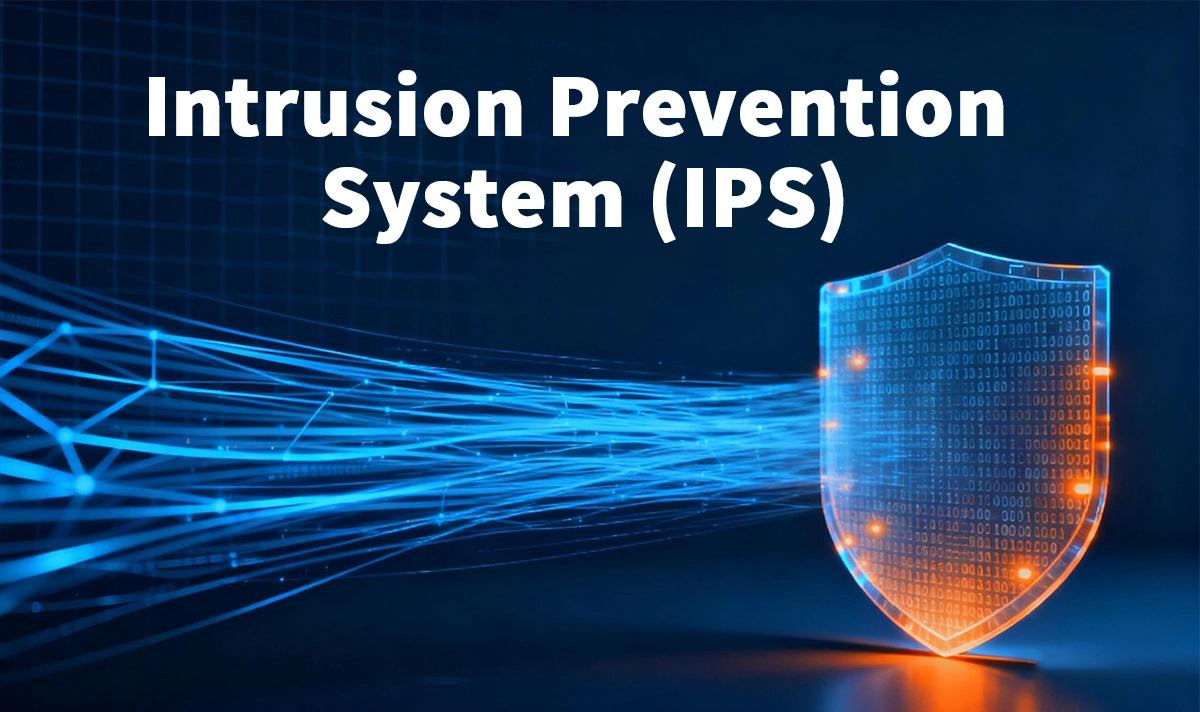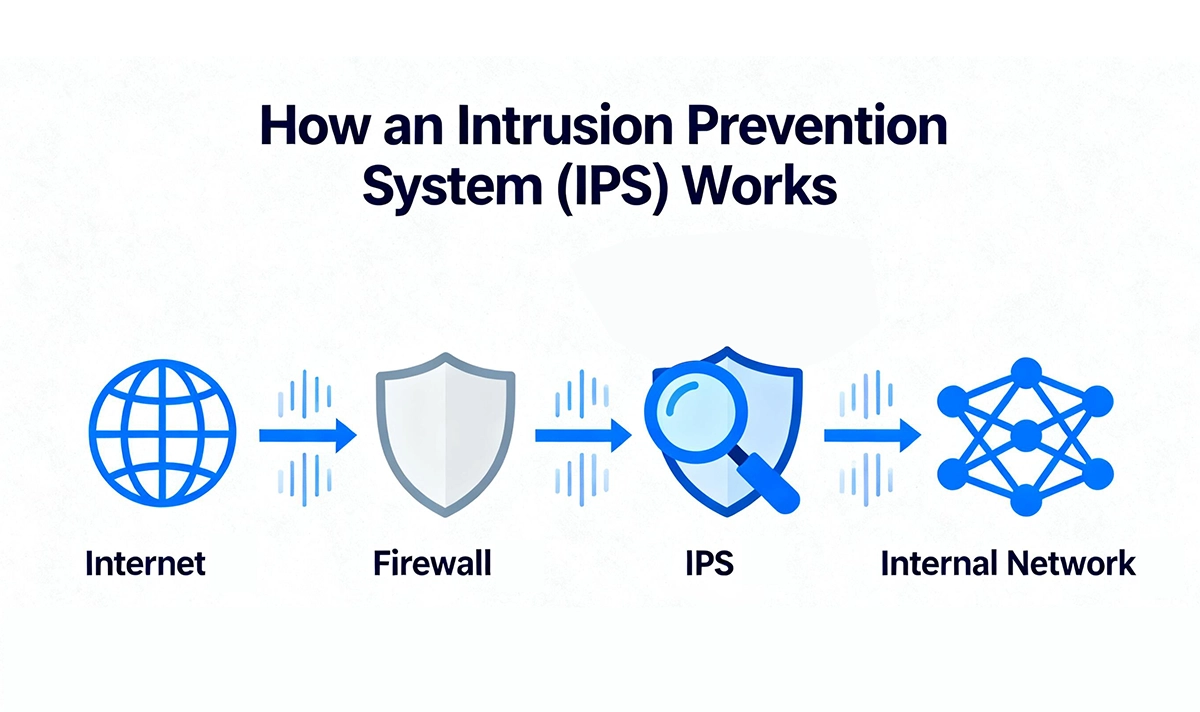
🛡️ What Is an Intrusion Prevention System (IPS)?
An Intrusion Prevention System (IPS) is a real-time network security solution designed to detect, analyze, and automatically block malicious traffic before it can compromise systems or data. Acting as a proactive security layer, an IPS continuously monitors network packets and stops suspicious activities based on behavior analysis, threat intelligence, and signature detection.
In simple terms, while a firewall filters traffic based on predefined rules, an IPS actively intercepts and prevents cyberattacks such as malware injection, denial-of-service attempts, and zero-day exploits.
🛡️ How an IPS Works
IPS operates inline—directly between the network and its destination—allowing it to inspect all packets passing through. Its core process involves:
Traffic Monitoring: All incoming and outgoing packets are examined in real time.
Deep Packet Inspection (DPI): The system analyzes data beyond headers, identifying patterns or payloads matching known threats.
Anomaly Detection: IPS uses heuristic and behavioral models to detect previously unknown attacks.
Automated Response: When a threat is identified, the IPS can block traffic, reset connections, or alert administrators.
This real-time prevention capability makes IPS an essential component of modern enterprise network defense, often integrated with firewalls, SIEM systems, and antivirus tools.

🛡️ IPS vs IDS: What’s the Difference?
Although closely related, Intrusion Detection Systems (IDS) and Intrusion Prevention Systems (IPS) differ in functionality and response:
Feature | IDS (Intrusion Detection System) | IPS (Intrusion Prevention System) |
|---|---|---|
Role | Monitors and alerts on suspicious activity | Detects and blocks threats in real time |
Response Type | Passive (notification only) | Active (automatic prevention) |
Deployment | Out-of-band (monitoring only) | Inline (actively intercepts traffic) |
In short, IDS detects, IPS defends.
Most modern organizations deploy IPS as part of a Next-Generation Firewall (NGFW) for unified threat management.
🛡️ Main Types of Intrusion Prevention Systems
Understanding IPS categories helps in choosing the right model for different network environments:
Network-Based IPS (NIPS):
Monitors traffic across the entire network and prevents large-scale attacks.Wireless IPS (WIPS):
Protects Wi-Fi environments by detecting rogue access points and wireless intrusions.Host-Based IPS (HIPS):
Installed directly on endpoints or servers to monitor local processes and system calls.Network Behavior Analysis (NBA):
Uses flow data to identify unusual traffic patterns like DDoS attacks or data exfiltration attempts.
🛡️ Key Benefits of Deploying IPS
Proactive Threat Blocking: Stops attacks before they impact systems.
Reduced Attack Surface: Identifies vulnerabilities early and prevents exploitation.
Regulatory Compliance: Supports data protection standards like ISO 27001, PCI-DSS, and GDPR.
Integration with Firewalls: Works with NGFWs for comprehensive, layered security.
By implementing IPS technology, enterprises enhance their ability to detect and stop both known and emerging threats, keeping operations resilient.
🛡️ Best Practices for IPS Configuration
To ensure optimal performance, security engineers should follow these guidelines:
✅ Regular Signature Updates: Keep IPS databases current to detect the latest threats.
✅ Set Sensible Detection Thresholds: Avoid false positives that can disrupt normal traffic.
✅ Monitor Logs Continuously: Analyze alerts for attack trends and tuning needs.
✅ Combine with Layered Defense: Use IPS alongside firewalls, VPNs, and endpoint protection.
✅ Perform Routine Audits: Test rule effectiveness to maintain network reliability.
🛡️ How LINK-PP Strengthens IPS-Based Networks
A robust Intrusion Prevention System requires reliable physical connectivity. LINK-PP delivers high-quality magnetic RJ45 connectors and PoE-compatible LAN transformers that ensure:
Stable, interference-resistant Ethernet transmission
Signal integrity for high-speed packet inspection
EMI suppression essential for secure IPS and firewall communication
From 10/100/1000BASE-T to 10GBASE-T applications, LINK-PP’s components are trusted by global OEMs and network security device manufacturers.
By integrating LINK-PP’s connectivity solutions, enterprises can achieve secure, high-performance IPS deployments that support modern cybersecurity frameworks.
👉 Explore LINK-PP’s RJ45 connectors and Ethernet magnetics for reliable, secure network infrastructure.
🛡️ Conclusion
The Intrusion Prevention System (IPS) plays a vital role in modern cybersecurity, offering proactive defense against increasingly sophisticated network threats.
By combining advanced IPS solutions with LINK-PP’s reliable Ethernet hardware, organizations can build secure, stable, and high-performance networks—ready to withstand the challenges of today’s digital landscape.


